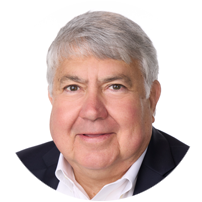
Atlanta Fed president Raphael Bostic
The Federal Open Market Committee (FOMC) voted unanimously June 18 to hold interest rates steady at a time it observed "uncertainty about the economic outlook has diminished but remains elevated," the committee said in its statement following the meeting. They added that "recent indicators suggest that economic activity has continued to expand at a solid pace."
Atlanta Fed president Raphael Bostic supported the decision. "I think we have some space and time" to evaluate the economy before adjusting the short-term interest rate, Bostic said in a Reuters interview published June 24.
Bostic anticipates year-over-year economic growth may fall to around 1.1 percent in 2025, which is lower than the 1.4 percent median forecast by the FOMC in its June 18 announcement. Bostic told Reuters inflation could reach nearly 3 percent by year-end, which compares to the latest median FOMC forecast of 3.1 percent for the Fed's preferred measure of inflation, the core Personal Consumption Expenditures price index. The FOMC has set a 2 percent inflation rate as most consistent with its congressional mandate to foster stable prices and moderate long-term interest rates.
Given this scenario, Bostic said, "I'm more concerned about what happens if we don't get to our 2 percent mandate. Because of that, I'm willing to stay in this restrictive posture for longer just to be absolutely sure."
The rate-setting FOMC voted to leave its benchmark policy rate unchanged at 4-1/4 to 4-1/2 percent, which has been the fed funds rate since December 19, 2024. The Fed's short-term borrowing rate influences interest rates on products including credit cards, vehicle loans, and home mortgages. The committee maintained the reduction in the monthly redemption cap on Treasury securities at $5 billion, the rate it approved at the March meeting.
The FOMC also released its Summary of Economic Projections (SEP). Although Fed chair Jerome Powell routinely emphasizes the SEP is subject to uncertainty and does not represent a committee plan or decision, Fed watchers use the findings to shape their own economic forecasts. The quarterly report of the individual, anonymous projections by the 19 FOMC participants presents their expectations for the most likely outcomes for the short-term interest rate, gross domestic product (GDP) growth, and rates for unemployment and inflation through 2027 and over the longer run.
The median of the economic projections shows the policymakers now expect rates of inflation and unemployment will be higher, and economic growth will be lower, in late 2025 than they had forecast in the March SEP. Two rate cuts are forecast this year by the largest proportion of participants, eight of 19. Two policymakers predict three rate cuts. However, a growing proportion of participants showed an interest in leaving rates unchanged this year. The number of policymakers who expect no rate cut increased to seven from the four who recorded that outlook in March.
Bostic told Reuters he thinks a single rate cut of a quarter point is warranted this year. The last quarter of the year "is sort of when I would expect we would know enough to move,” Bostic told Reuters.
Before the meeting, the Atlanta Fed's regional business contacts reported the Southeast's economy grew slightly from mid-April through May, although signs of economic uncertainty are evident across several sectors, according to the June 4 edition of the Beige Book, the Fed's national and district-specific overview of descriptive, anecdotal information.
Southeastern contacts reported in general that consumer demand had softened, the quality of loan applications were good, labor supply has increased, and turnover has decreased as wage pressure has eased. Firms across sectors, geographies, and firm sizes voiced inflationary concerns related to trade policy.
Bostic told Reuters the real-time reports from business contacts indicate to him that businesses and their customers are starting to adjust to potential costs associated with tariffs. "They tell me, 'I'm pretty sure I am going to have to raise my prices. The question is not whether but when.' "
As he said previously, Bostic will continue to monitor these qualitative reports as he seeks a clearer view of the economic outlook.
"More and more businesses are telling me that in their sector, the strategies that they had to forbear are increasingly running their course," he told Reuters. "They have worked but they have run their course, and they can't keep doing it."
The Atlanta Fed president does not currently cast a vote on policy moves because of the rotation schedule among voting members of the FOMC. However, he participates in FOMC deliberations and provides information about the southeastern economy and contributes to the Committee's assessment of the economy and policy options. The Atlanta Fed president is slated to have a vote in 2027.
Read Bostic's message delivered June 3, "Pervasive Uncertainty Calls for a Patient Policy Stance;" Bostic's message delivered February 20, "Uncertainty Calls for Caution, Humility in Policymaking;" and listen to his January 7 podcast episode,"'There's Still a Lot of Uncertainty': Atlanta Fed President Bostic Looks Back on 2024."
Read the Federal Reserve's FOMC statement, issued June 18.




